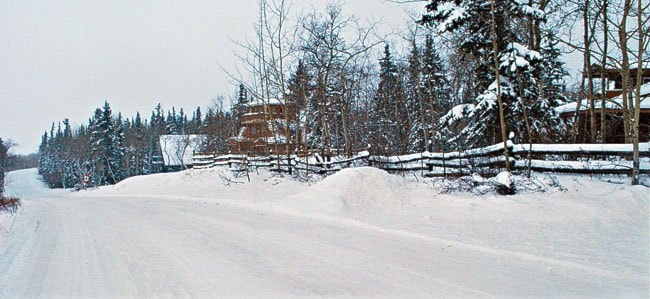Just what does the future hold for Marsh Lake?
The bedroom community of about 600 people spread out along 40 kilometers of the Alaska Highway is in the process of creating a local area plan to guide future development.
A survey of local residents wraps up on Wednesday.
The survey is just one more part of the public consultation process that’s been ongoing for more than a year, said Malcolm Taggart, a member of Marsh Lake’s local area planning steering committee.
The planning officially kicked off in June 2011, but the question of how to guide future development is something the community has been grappling with for a decade.
It’s one of the reasons that the community formed a local advisory council in 2000, said Taggart, who sat on the council from its inception until October of this year.
“There was, and has been, steady development pressures, but all ad hoc,” he said. “The idea was to come together as a community to think about how to deal with those development pressures in a way that makes more sense, rather than simply random applications for land here, there and everywhere.”
Once the results of the survey are tabulated and analyzed they’ll be used to help inform a draft plan for the community.
That draft is tentatively scheduled to be presented early next year, said Jerome McIntyre, the territory’s director of land planning.
“These things go through a series of consultation, refinement, consultation, refinement, and each time you find out where areas of agreement are and where additional discussion and work has to be done to get us towards something that meets the needs of everyone, so to speak,” he said.
That’s not going to be an easy thing to do with Marsh Lake, said McIntyre.
While it’s a small community, it’s also a disparate one.
“Marsh Lake is almost like several communities within a single community.”
In addition, 50 per cent of the 377 square kilometres that make up the planning area is owned by the Kwanlin Dun First Nation.
Once the survey is complete the results can be broken down in all kinds of ways, by neighborhood, between renter and property owners, First Nations and non-First Nations, said McIntyre.
“We’ll be able to drill down to that to see if there are differences,” he said.
There’s a broad range of issues: off-road vehicles, recreational waterfront access, infrastructure development, wildlife habitat and more.
One of the big overarching issues for Marsh Lake is sustainability, said Georgia Greetham, chair of the steering committee.
“We’ve had a lot of back-and-forth discussions about what is most sustainable,” she said in an email. “Do we keep growing Marsh Lake as a bedroom community to Whitehorse, interspersed with cottages and homesteaders, and if so, how do we envision sustainability in this context? Or, should we plan for a Marsh Lake village centre, to get more people working more close to home, in a village-type community, and if so where would that go?”
Now that the planning process has moved from the general to specifics, it’s starting to generate a lot more interest from the community, said Taggart.
But that’s par for the course, said McIntyre.
“That’s always the case with planning and development,” he said. “People are very passionate about what happens in our community.”
Contact Josh Kerr at joshk@yukon-news.com
